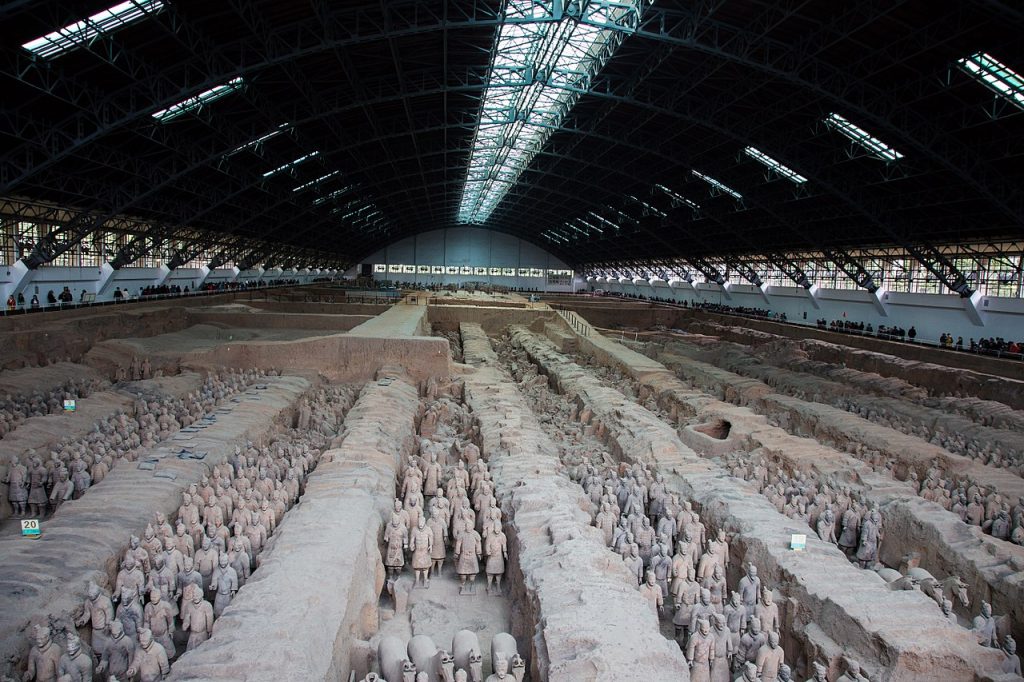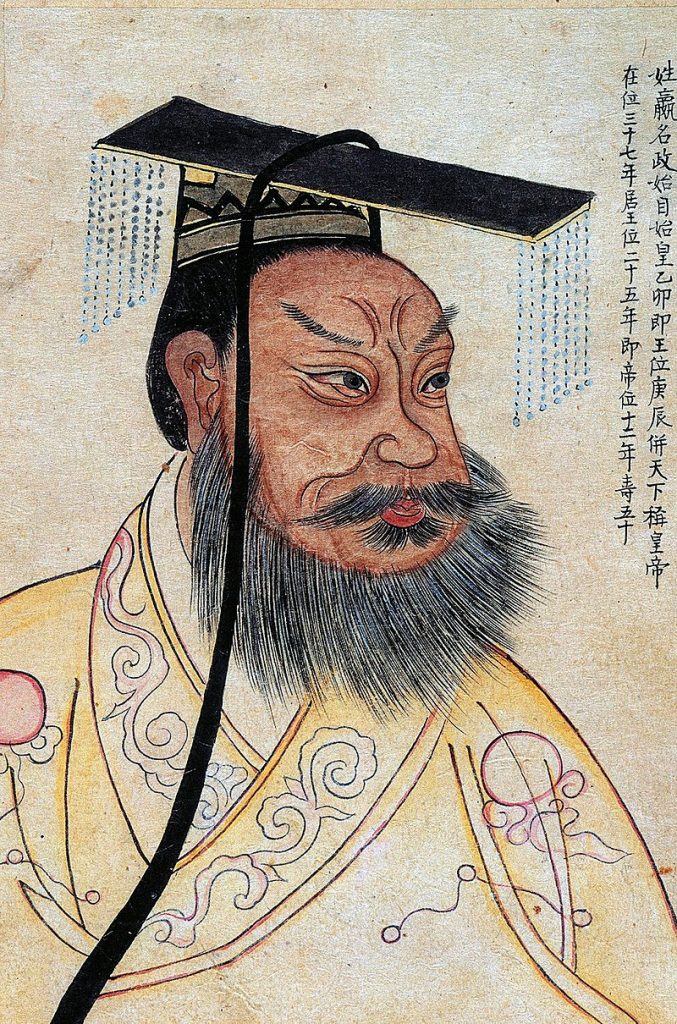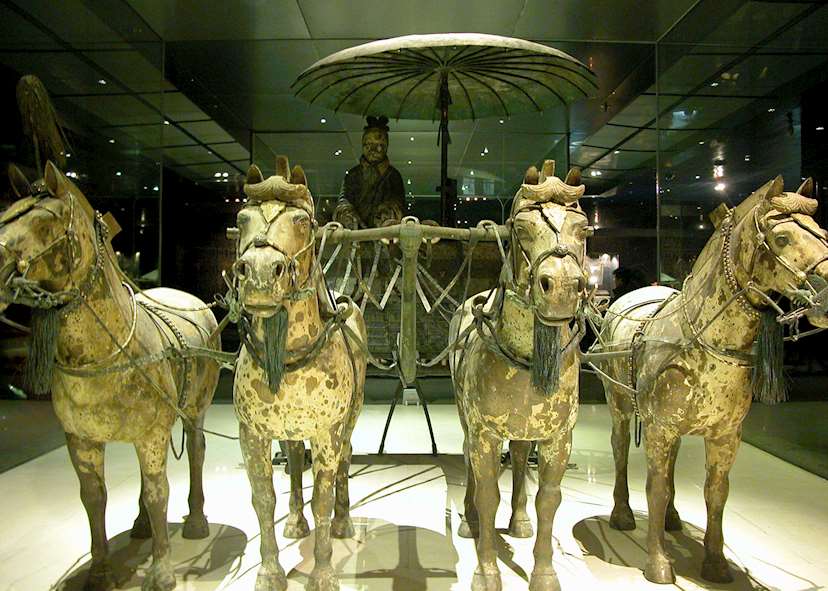
In 1974, a group of workers digging a well outside the city of Xi’an, China, made an incredible archaeological discovery: a life-size clay soldier, ready for battle.
Upon notifying Chinese authorities, government archaeologists were sent to the site and uncovered thousands of clay soldiers, each with its own individual facial expressions and arranged according to rank.
Although the majority of them are now a dull gray color, traces of paint suggest they were once brightly colored. Further excavations have unearthed weapons, many in excellent condition. The soldiers are situated in underground corridors, with clay horses aligned four abreast and wooden chariots behind them.
The terra-cotta army, as it is now known, is believed to have been created as part of an elaborate mausoleum to accompany the first emperor into the afterlife.
YOUNG EMPEROR

In 246 B.C., Ying Zheng ascended the throne at the tender age of 13. By 221 B.C., he unified a number of warring states and had taken the name of Qin Shi Huang Di, becoming the First Emperor of Qin.
During his reign, he standardized coins, weights, and measures, connected the states with canals and roads, and is credited with building the earliest version of the Great Wall. According to the writings of court historian Siam Qian from the following Han dynasty, Qin ordered the construction of his mausoleum soon after he became emperor.
More than 700,000 laborers worked on the project, yet it was discontinued in 209 B.C. due to uprisings following the emperor’s death. To date, four pits have been partially excavated, three of which are filled with terra-cotta soldiers, chariots, and weapons.
The fourth pit is empty, indicating that the project was never completed. Archaeologists estimate that the pits may contain up to 8,000 figures, though the exact number may never be known.
UNEXCAVATED TOMB

The tomb of Qin Shihuang, the first Chinese emperor, has yet to be excavated, although Siam Qian’s descriptions of it suggest it contained vast riches.
According to his writings, the tomb was filled with replicas of palaces, pavilions, and offices, as well as vessels, stones, and rarities; and contained rivers and streams made of mercury that flowed to the sea through mountains of bronze, with precious stones representing the sun, moon, and stars.
Recent tests of the tomb mound have revealed higher concentrations of mercury, lending credibility to some of the historical accounts. Chinese archaeologists are using remote-sensing technology to probe the tomb mound and have discovered a chamber that may have been made for the soul of the emperor.
Furthermore, experimental pits dug around the tomb have revealed life-like statues of dancers, musicians, and acrobats in mid-performance, which are in stark contrast to the famous terra-cotta soldiers.
However, further excavations of the tomb are currently on hold, with Duan Qinbao, a researcher with the Shaanxi Provincial Archaeology Institute, telling the China Daily that “it is best to keep the ancient tomb untouched, because of the complex conditions inside”.
Leave a Reply